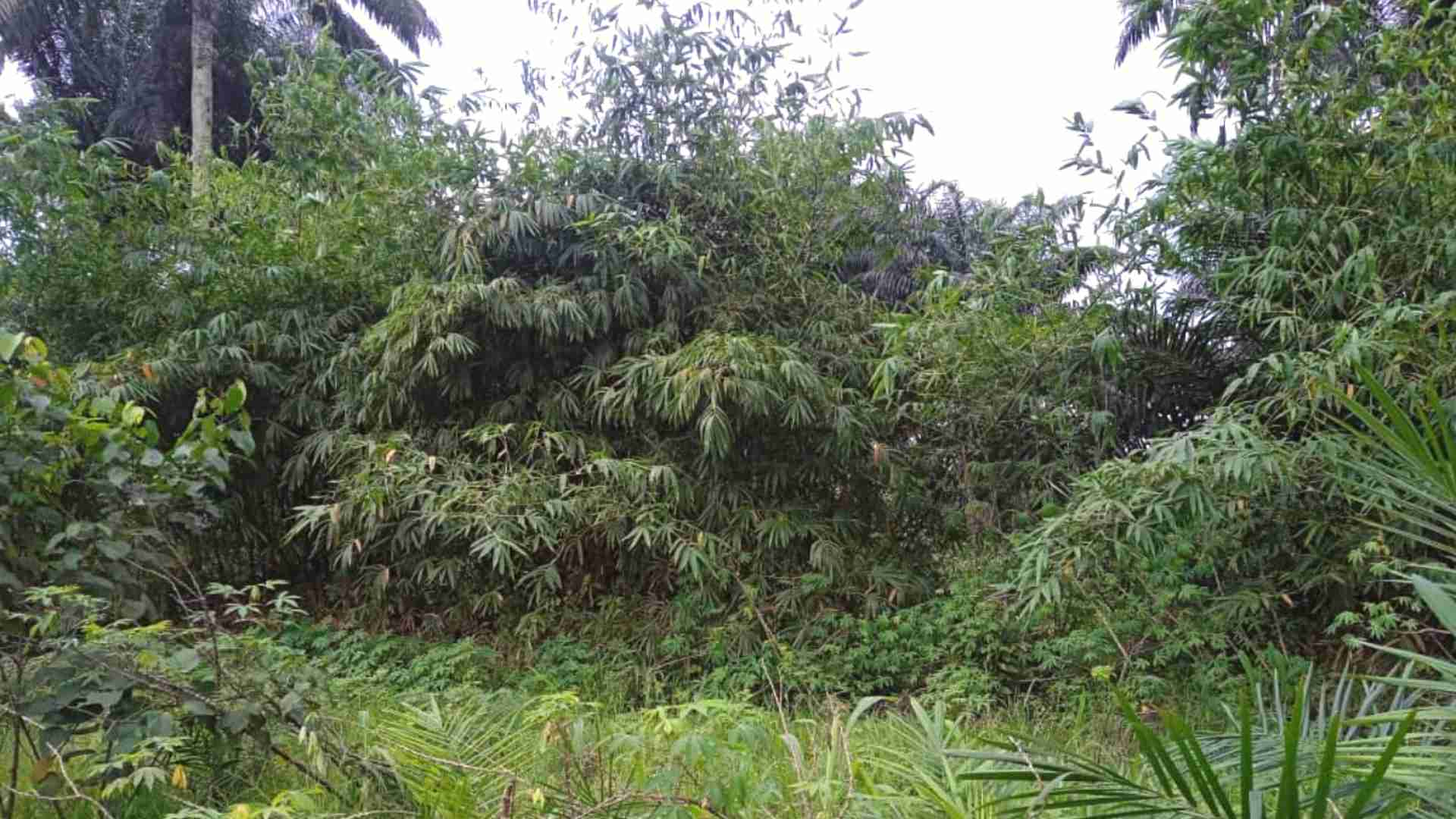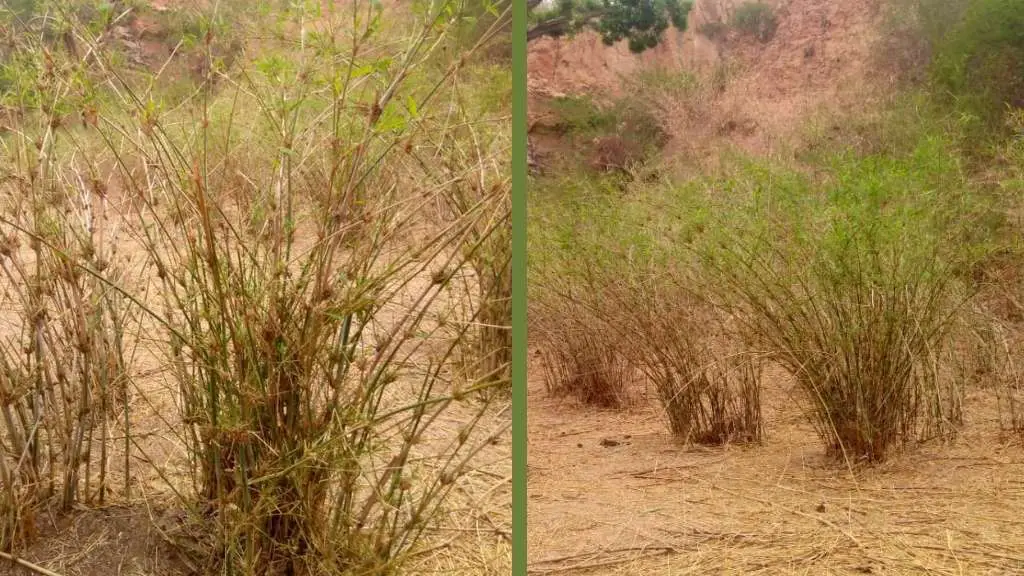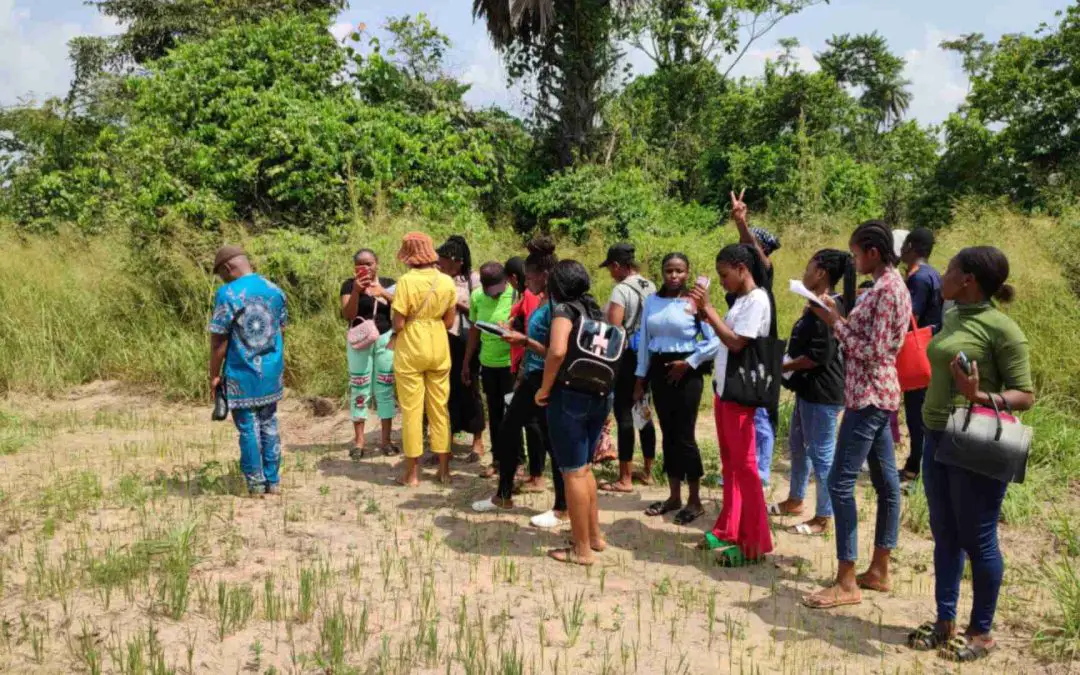We know that bamboo has a vast range of uses and applications, in industry, reforestry, and beyond. And we can debate whether there are 1,200 or 1,400 or 1,600 distinct species and varieties of bamboo. People have been growing, eating and building with bamboo for millennia. And yet, there is so much that remains unknown or uncertain about his fascinating subfamily of grasses. Luckily, there are bamboo scholars and scientists all over the world, from Nicaragua to Nigeria, who are studying the many attributes of this amazing plant.
John Agbo Ogbodo, founder and director of the Sustainable TransEnvironment International Foundation (STEi), is spearheading an important bamboo research project in Nigeria. With the support of the federal government and organizations like Bambu Batu, Ogbodo and his team of students and researchers will study the native bamboo species of Nigeria and their potential use in soil remediation and for commercial products like biochar. Ogbodo is also a faculty member of the Forestry and Wildlife Department at Nnamdi Azikiwe University with extensive knowledge of the country’s biodiversity and terrain.
Bamboo’s place in Nigeria
Bamboo is not exactly a booming industry in the West African nation of Nigeria. Rubber, cocoa and petroleum are arguably much more important here. But the country has at least a few native species of bamboo, and local residents and scientists are becoming increasingly aware of its potential as a natural resource and a tool for reforestation.
With the largest economy in Africa, Nigeria could play a valuable role in advancing bamboo’s position on the continent. The nation has less bamboo than countries like Kenya and Ethiopia, but Nigeria’s tropical climate is perfectly hospitable for many productive species of bamboo. And now, more than ever, Nigerians are recognizing the supreme potential of this renewable resource to restore their landscapes and boost the rural economy.

As we’ve seen in other parts of Africa, and around the world, bamboo can work wonders with degraded terrain. Its unique resilience and tenacious growth habit make bamboo a fantastic pioneer species, improving the land and the topsoil and making it more inviting for other flora. At the same time, bamboo’s unsurpassed versatility as a raw material for construction, crafts, food, fuel and textiles enables it to create a wide range of economic opportunities.
Take a look at our in-depth articles on Bamboo for land restoration and Bamboo for poverty relief to learn more.
Bamboo research in Nigeria
Political stability and economic conditions in Nigeria have been improving in recent decades. But like the rest of the world, environmental threats continue to grow more severe. Scientists and activists are therefore looking to bamboo as a vital tool to curb deforestation and promote sustainable development.
One such scholar and activist, John Agbo Ogbodo, has been studying forestry and biodiversity in Nigeria for many years. He is a lecturer with the Department of Forestry and Wildlife at Nnamdi Azikiwe University. In 2017, Ogbodo founded the Sustainable TransEnvironment International Foundation (STEi), a Pan-African, non-political, non-religious, not-for-profit, nongovernmental organization with the motto: “Greening the environment and empowering the women and youth of rural Africa”. He is also a member of the Task Force on Sustainable Bamboo Management (TFSBM) with the International Bamboo and Rattan Organization (INBAR).

In January 2022, Ogbodo approached Bambu Batu with plans to launch a wide-ranging research project investigating the native and non-native species of bamboo in Nigeria, and their potential applications in agriculture, forestry, and manufacturing. The university lecturer is eager to make a positive impact on the environment in his native country, and was looking for a meaningful project for some of his Ph.D. students. Together we discussed some specific research topics that would be especially interesting, and Bambu Batu agreed to help publicize and garner support for the program.
Scope of research
The research project, as proposed by Ogbodo, touches on several aspects of bamboo cultivation and industrialization in Nigeria.
- Bamboo resources assessment in Nigeria. Forestry experts like Ogbodo generally recognize two species of bamboo native to Nigeria: Oxytenanthera abyssinica and Bambusa vulgaris. It remains unclear how widespread these bamboo varieties are in Nigeria’s extensive wilderness. Despite devastating levels of deforestation, which peaked in 2005, it’s possible that other native species of bamboo are also present. Numerous non-native species have also been introduced over the years.
- Domestication of improved tropical bamboo species from other African countries in Nigeria. As the local bamboo resources are better understood, it may be interesting to add other species of bamboo, such as Yushania alpina, from other regions of sub-Saharan Africa.
- Domestication of improved exotic (Asian) bamboo species in Nigeria. In addition to the African bamboo varieties, other Asian species are also worth considering. Varieties like Asper and Guadua are renowned for their great size and strength and have proven very valuable in Southeast Asia and South America, respectively.
- Bamboo propagation studies using different methods. In order to scale up the production of bamboo in Nigeria, it will be necessary to study and master the methods of propagation, whether by seed, cutting, or tissue culture.
- Testing the potential of bamboo biochar in soil amelioration for food security. Charcoal and biochar and among the simplest products to make from bamboo, with dozens of applications for energy and agriculture. When added to the soil, biochar helps to attract beneficial microorganisms and to retain moisture.
- Bamboo as a nature-based approach to reclaiming degraded land-based ecosystems. In badly deforested and degraded landscapes, bamboo can establish itself quickly, while also binding the soil and producing shade, making areas more hospitable for other native species to return. In the long run, this can help with the recovery and restoration of lost habitats and ecosystems.
- Testing the potential of bamboo phytoremediation capacities in removing heavy metals and toxins from soils with crude oil/oil spills. Bamboo’s capacity to draw toxins out of the soil with its vigorous root and rhizomes is especially interesting, particularly in parts of Nigeria where the soil is badly polluted from chemicals and oil spills. Testing in this area can help determine how quickly such remediation occurs and which species perform it most effectively.
Update: More bamboo discovered in the Sahel
Fewer than six months into the project, research volunteers already sent back many photos of wild bamboo growing in the grasslands and dry savannahs of northern Nigeria. Researchers were surprised by the quantity of bamboo they found growing here.

Often considered to be an Asian grass that thrives best in a tropical rainforest, these images show Oxytenanthera abyssinica, native to sub-Saharan Africa, growing prolifically in Nigeria’s Yobe State, in the Sahel region, on the edge of the Sahara Desert. As Climate Change intensifies concerns about desertification, these bamboo groves stand on the front line, preserving a fragile ecosystem and warding off the Sahara’s looming expansion.
As the bamboo in these photos appears to be flowering, we’re hopeful that researchers will be able to gather seeds. These could prove valuable as a contribution to the Great Green Wall project taking place across the Sahel. O. abbysinica tends to flower gregariously, but at unpredictable intervals.
Get involved
If you’re interested in getting involved, supporting more bamboo research, or soliciting support for your own research project, take a look at our article on Bamboo research, or you can contact Bambu Batu directly for more specific information and advice.
Further exploration
To learn more about the amazing varieties of bamboo and their enormous potential around the globe, check out some of these other informative articles.
- Introducing bamboo: Genus by genus
- Where does bamboo come from?
- Bamboo in Africa
- Bamboo and reforestation
FEATURED PHOTO: Professor John Agbo Ogbodo and his forestry students working in the field in Rivers State, Nigeria

























